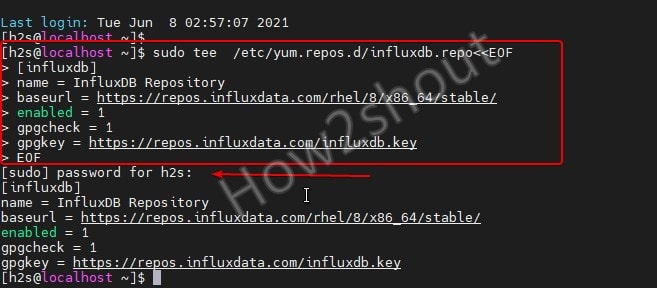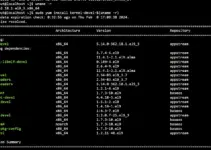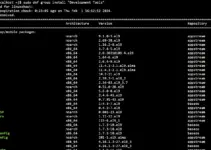Here we learn the steps and commands to install the InfluxDB database server and secure it on AlmaLinux or Rocky Linux 8 using the terminal. And also how to access it remotely using Influx’s HTTP API…
What is InfluxDB?
InfluxDB is an open-source database developed by InfluxData that prioritizes maximum efficiency with limited complexity, unlike relational databases such as MySQL and MariaDB or structured databases such as Redis. Although the software is distributed under an open-source license, the company also offers commercial extensions such as access controls for business customers within its root server and cloud services with graphical data analysis via a web interface.
Relational databases like MySQL are extremely flexible due to their complex structure and accordingly require high memory and computing capacity, whereas InfluxDB uses a simple structure. It enables databases to be managed quickly and reliably without the need for extensive analysis of a tabular structure or the analysis of numerous cross-references. These features enable the DBMS to register data sets in real-time, including sensors or states, using smart devices of the Internet-Of-Thing (IoT), and to save and transmit them almost at the same time. Since version 2.0, InfluxDB has made it possible to use its programming language called Flux for querying information.
Key features of InfluxDB:
- Specialization in time series
- Combination of several sources in one central instance
- Very high processing efficiency
- Support of Flux as a scripting language for administration
- Collection of data from different sources, for example via the third-party API
- Exchange of data via Apache Arrow as an interface
Steps to install InfluxDB on AlmaLinux or Rocky 8
The steps given below to install InfluxDB on AlmaLinux are also applicable for RHEL or CentOS 8 Linux server operating systems.
Step 1: Add the InfluxDB repository
Although we can download the latest RPM package of InfluxDB directly from its official website, however, the repository way will ensure our system will get its latest packages every time you run the system update command-
Copy the below given whole block of command and paste it into your command terminal. After that hit the enter key and provide your user password to create an InfluxDB repo file on your system.
sudo tee /etc/yum.repos.d/influxdb.repo<<EOF [influxdb] name = InfluxDB Repository baseurl = https://repos.influxdata.com/rhel/8/x86_64/stable/ enabled = 1 gpgcheck = 1 gpgkey = https://repos.influxdata.com/influxdb.key EOF
Step 2: Run the system update command
Next, use the system package manager DNF to run the system update command this will not only install the latest available packages & updates for the system but also refresh the repo cache.
sudo dnf update
Step 3: Command to install InfluxDB on Almalinux or Rocky Linux
Finally, use the given command to download and install the InfluxdB packages on your RPM-based Linux operating system.
sudo dnf install influxdb
Step 4: Start and Enable the Influxdb service
To let the database server service start automatically with the system boot, start and enable it using the given commands.
sudo systemctl start influxdb sudo systemctl enable influxdb
Step 5: Allow InfluxDB TCP port 8086 in the Firewall
If you have enabled the system firewall then allow port 8086 in it to access InfluxDb from the client over its HTTP API.
sudo firewall-cmd --add-port=8086/tcp --permanent sudo firewall-cmd --reload
In the same way, we can also open TCP port 8088 using the above command, if needed. This port is used by the RPC service for backup and restore.






